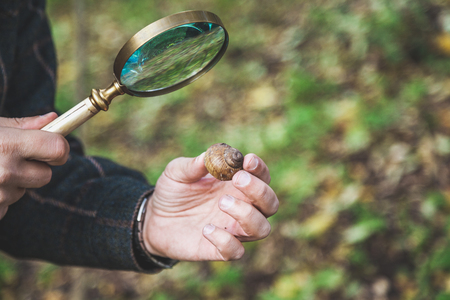Understanding Hedgehog Hazards in Urban Gardens
For those of us who cherish the quiet charm of hedgehogs in our city gardens, it’s important to recognise just how many challenges these little creatures face in urban environments across Britain. Unlike their countryside counterparts, urban hedgehogs must navigate a landscape shaped by people—one filled with threats that often go unnoticed in our daily routines. The most obvious danger is busy roads, which can turn a simple journey into a perilous adventure for these nocturnal wanderers. Every year, countless hedgehogs fall victim to traffic as they attempt to cross from one green patch to another, driven by the instinct to find food or mates.
But roads are just the beginning. Modern garden design and home improvements have unintentionally created artificial barriers—solid fences and impenetrable walls—that fragment habitats and prevent hedgehogs from roaming freely between gardens. Many traditional British gardens once had gaps under fences or natural hedgerows that allowed easy passage, but as we strive for tidy borders and security, we often forget the needs of our wildlife neighbours.
Pesticides and slug pellets present another significant hazard. While these chemicals help keep our plants free from pests, they also poison the invertebrates that hedgehogs rely on for food, or worse still, directly harm the hedgehogs themselves. The cumulative effect of these obstacles is a shrinking safe haven for hedgehogs within our towns and cities—a trend that has contributed to their decline over recent decades. Understanding these hazards is the first step towards creating safer, more welcoming spaces where hedgehogs can thrive alongside us.
Safe Passage: Creating Hedgehog-Friendly Routes
If you’ve ever had the pleasure of spotting a hedgehog snuffling about in your garden at dusk, you’ll know just how heartwarming it can be. But for these charming creatures to thrive in urban areas, they need safe and accessible routes between gardens. One of the most effective ways to support hedgehogs is by establishing ‘hedgehog highways’—small gaps or holes in fences that allow them to roam freely in search of food and shelter. This simple action can make a world of difference, especially as fenced-off gardens are often one of the biggest barriers for our prickly friends.
What Is a Hedgehog Highway?
A hedgehog highway is essentially a hole measuring about 13cm x 13cm (roughly the size of a CD case) cut at the bottom of a garden fence or wall. This allows hedgehogs to pass safely from one garden to another without having to brave busy roads or get stuck trying to climb over obstacles. It’s a small change with big benefits.
Practical Steps for Creating Access
| Step | Description |
|---|---|
| 1. Identify Barriers | Walk around your garden and spot any solid fences, walls, or gates that block passage. |
| 2. Check with Neighbours | Have a chat with your neighbours—most folks are happy to help if it means supporting local wildlife. |
| 3. Create a Highway | Cut or create a 13cm x 13cm hole at ground level in your fence or wall. Make sure its smooth to avoid injury. |
| 4. Mark the Spot | Add a little sign or marker so others know it’s intentional and for wildlife. |
The Importance of Neighbourly Collaboration
Hedgehogs travel surprising distances each night—sometimes up to two miles—so a single open garden isn’t enough. By working together with your neighbours, you can create a network of connected gardens, giving hedgehogs access to larger territories and safer routes. Perhaps start by mentioning it during a chat over the garden fence or popping a note through letterboxes on your street. In my experience, this sort of neighbourly project not only benefits hedgehogs but also brings communities closer together.
Remember, every little helps when it comes to wildlife conservation, and sometimes all it takes is the good old British spirit of cooperation and a willingness to lend a hand—or in this case, a hole—to ensure our spiky companions can wander safely from garden to garden.

3. Garden Maintenance: What to Avoid
It’s easy to overlook the simple routines in our gardens that could inadvertently put hedgehogs at risk. Many of us, especially those who grew up with a set way of doing things, might not realise just how dangerous certain garden maintenance habits can be for these little visitors. A few mindful changes can make all the difference, helping hedgehogs thrive in our urban spaces.
Always Check Before You Cut or Clear
If you’re about to strim the edges of your lawn or clear away piles of leaves and logs, take a moment to check for hidden hedgehogs. These creatures often curl up and sleep in unexpected places—especially under garden debris or long grass. Give everything a gentle poke with a stick before using any machinery, and remember: what looks like a harmless pile to us might be a cosy home for them.
Bonfire Safety: Don’t Light Until You’ve Looked
Garden bonfires are a classic British tradition, but they’re also notorious for harming hedgehogs. If you’re planning a burn-up, always rebuild your bonfire on the day you intend to light it. This simple habit ensures that no animals have taken refuge inside overnight. It’s a small step but one that’s saved countless lives over the years.
Reduce Risks from Garden Machinery
Lawnmowers, strimmers, and even compost shredders can be lethal if we’re not careful. Before switching on any garden machinery, have a quick scan for signs of wildlife. If you spot holes, trails, or droppings, proceed with extra caution or choose hand tools instead. Slowing down and being observant is something older generations often did out of necessity—it’s wisdom that serves both us and our local wildlife well today.
Changing Habits for Good
Adapting our routines may seem inconvenient at first, but these small changes quickly become second nature—just like putting out fresh water during hot spells or topping up bird feeders in winter. By checking before we cut, avoiding lighting bonfires without inspection, and using machines mindfully, we create safer havens for hedgehogs in our busy urban gardens. Over time, these habits help knit together communities where wildlife and people coexist harmoniously.
4. Responsible Use of Chemicals
If you’ve been gardening in the UK for any length of time, you’ll know just how persistent slugs and pests can be, especially when our weather swings from rainy to dry in the blink of an eye. It’s tempting to reach for slug pellets or pesticides, but as those of us with a few years under our belts have learned, such chemicals can do more harm than good – particularly to our prickly friends, the hedgehogs, who rely on insects for their food.
Traditional slug pellets often contain metaldehyde, which is highly toxic not only to slugs but also to hedgehogs and other wildlife that might ingest either the pellets or poisoned prey. Even some pesticides marketed as ‘garden safe’ can disrupt the delicate balance in your urban oasis. Protecting hedgehogs means thinking twice before using these products and seeking out alternatives that keep both pests and precious wildlife in mind.
Below is a handy comparison between common chemical solutions and safer, hedgehog-friendly options you can try right here in your back garden:
| Chemical Solution | Risks to Hedgehogs | Safer Alternative |
|---|---|---|
| Metaldehyde Slug Pellets | Highly toxic if ingested directly or through contaminated prey | Wool pellets, crushed eggshells, copper tape |
| General Pesticides (sprays/granules) | Contaminates insects that are part of hedgehog diet; potential poisoning | Manual pest removal, companion planting (e.g., marigolds), encouraging natural predators like frogs or birds |
| Mothballs or strong chemical deterrents | Affects respiratory systems of small mammals; harmful residues | Coffee grounds, beer traps (placed safely where only slugs can access) |
Practical tips from experience:
- If you must use a control measure, always check labels for “wildlife friendly” certification and opt for organic products whenever possible.
- Create barriers with natural materials around your plants—hedgehogs are nimble enough to navigate most obstacles, but slugs are not so clever!
- Encourage birds and frogs by adding water sources and shelter; they’ll help manage pests without any need for chemicals at all.
- Regularly inspect your garden at dusk—when hedgehogs are active—and remove large slugs by hand. It’s honest work and kinder to the environment.
The bottom line is: A little patience and old-fashioned observation will serve your garden—and its wild inhabitants—better in the long run. By choosing responsible methods over quick fixes, you’re not just protecting hedgehogs; you’re preserving a slice of British nature for future generations.
5. Providing Food and Shelter
If you’re looking to make your urban garden a haven for hedgehogs, offering suitable food and shelter is one of the most practical ways to lend a hand. Our prickly friends are struggling with habitat loss in towns and cities, so every little effort counts. Let’s have a look at a few tried-and-true suggestions—rooted in local know-how—that will give hedgehogs a proper British welcome.
Offering the Right Nosh
Hedgehogs are partial to meaty pet food, so leaving out a shallow dish of cat or dog food (choose chicken or beef, not fish) can do wonders. Dried mealworms and sunflower hearts are popular, but they should only be offered sparingly as treats, since too many aren’t ideal for their health. Always pop out a shallow dish of fresh water, especially during dry spells. Avoid milk—it upsets their tummies and does more harm than good.
Creating a Safe Dining Spot
Place food and water in a quiet corner, sheltered from rain and prowling cats. Some folks fashion feeding stations from old plastic boxes—just cut a small entrance big enough for a hedgehog but too tight for larger animals. This helps keep greedy moggies at bay while letting hedgehogs enjoy their supper in peace.
Building or Buying Hedgehog Homes
Hedgehogs need somewhere cosy to bed down, especially during hibernation and breeding season. A simple log pile or heap of dry leaves tucked away behind the shed works wonders; it mimics their natural nesting spots. If you fancy something more robust, you can buy purpose-built hedgehog houses from local garden centres or even have a go at building one yourself—there are plenty of easy guides online. Position these homes in quiet areas of the garden, away from disturbance and facing away from prevailing winds for extra comfort.
Keeping Things Natural
Don’t be too tidy: letting part of your garden grow wild gives hedgehogs natural cover and attracts insects for them to munch on. Old timber, compost heaps, and leaf piles all make lovely hideouts. Remember, in true British fashion, sometimes the best thing you can do is just let nature get on with it.
A Little Effort Goes a Long Way
By making small adjustments—offering proper food and providing safe places to nest—you’ll soon see the tell-tale signs of hedgehog visitors: little footprints, droppings, or even the gentle rustle as they forage at dusk. These simple steps not only help hedgehogs thrive but add a touch of wildlife magic to any urban plot.
6. Community Involvement and Local Resources
One of the most rewarding aspects of making our urban gardens safer for hedgehogs is the chance to get involved with like-minded neighbours and local groups. Sharing knowledge is vital; sometimes it’s as simple as having a chat over the fence about how to create a hedgehog highway, or swapping tips on wildlife-friendly gardening at the allotment. This sense of camaraderie not only benefits the hedgehogs but also strengthens community spirit—something we Brits hold dear.
Joining local wildlife groups can be a brilliant way to gain practical advice and support. Organisations such as The British Hedgehog Preservation Society or your nearest Wildlife Trust often run workshops, volunteer days, or citizen science projects. These groups can provide resources, from leaflets to garden signage, and sometimes even lend equipment for hedgehog surveys or habitat building. For those new to wildlife gardening, these organisations are a treasure trove of information and encouragement.
Don’t overlook your local council either; many now offer guidance on urban wildlife or may even have small grants available for community-led nature projects. Libraries and community centres often host talks or display information about supporting hedgehogs in our towns and cities. If you’re keen to do more, consider rallying your neighbours for a street-wide hedgehog corridor or encouraging local schools to set up wildlife areas—children love getting stuck in, and it’s a wonderful way to pass on traditional British values of stewardship and care for our natural heritage.
By reaching out, sharing what we know, and making use of the rich network of British resources at our disposal, we can overcome many of the common obstacles faced by urban hedgehogs. Every little helps; whether you’re just starting out or have years of experience under your belt, your involvement could make all the difference to these cherished creatures.


